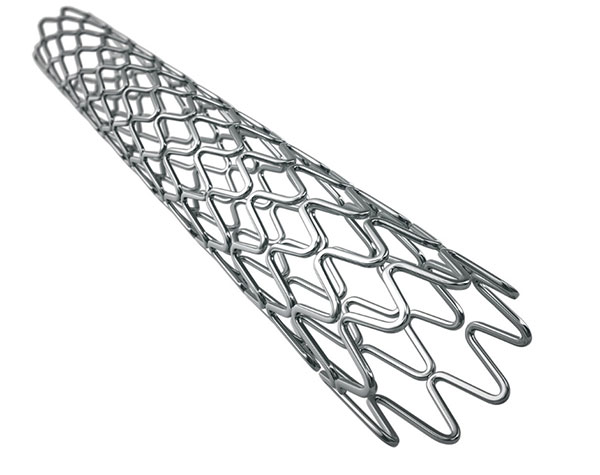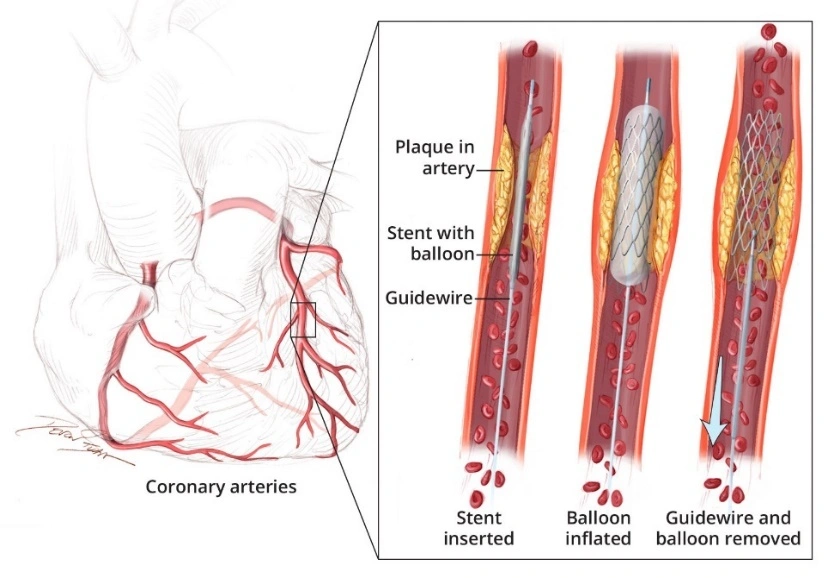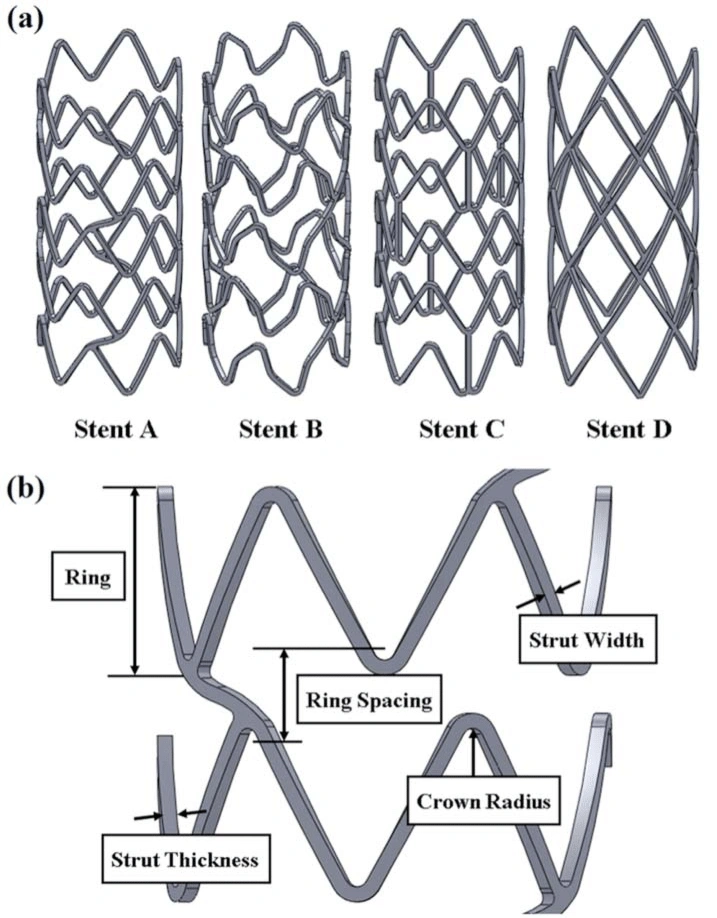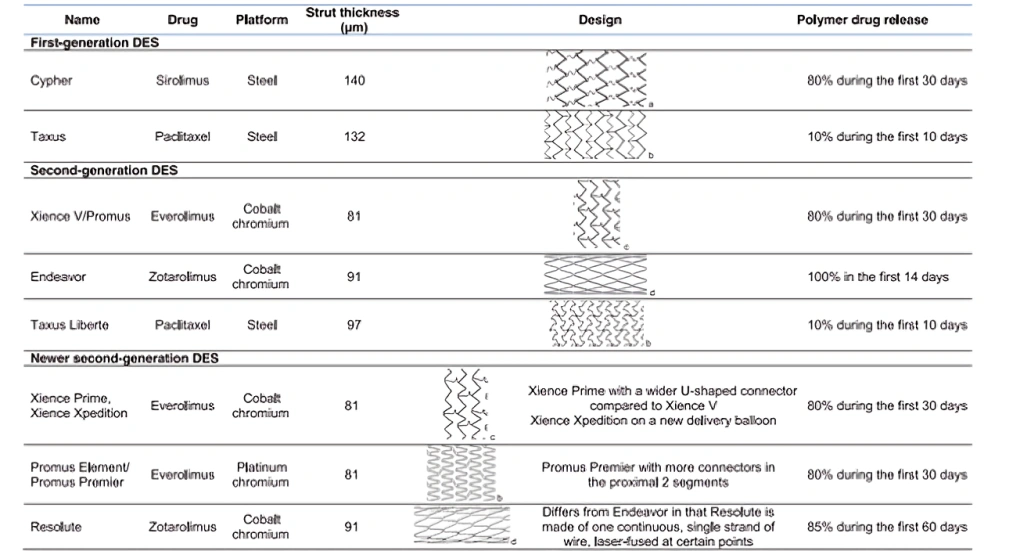Drug-eluting stents
Overview
A stent is a precise mechanical structure placed in the body (such as blood vessels or the gastrointestinal tract) to maintain open fluid pathways. This medical device is extensively used in treating cardiovascular diseases. Drug-eluting stents are a type of expandable coronary stent that carry drugs like sirolimus and paclitaxel on their surface. These drugs are gradually released into the surrounding tissues over several weeks, reducing the growth of unwanted cells. Consequently, these stents minimally impact the natural process of endothelialization in the inner layers of the artery (intima).

Placement of Drug-Eluting Stents
Drug-eluting stents are placed by surgeons using angiography. This minimally invasive procedure is performed through the arteries of the leg or arm under local anesthesia. A thin catheter is guided to the blocked artery, carrying a balloon and the stent. The balloon is then inflated, positioning the stent securely in place.
While angioplasty can be performed without a stent—where only the balloon is used to clear blockages—such cases show a higher rate of recurrence (about 40%). In contrast, using a stent reduces this probability to 30%, and employing drug-eluting stents further lowers the recurrence risk to below 10%.

Advanced Design and Technology of Drug-Eluting Stents
Due to their direct contact with the bloodstream, drug-eluting stents are classified as high-risk medical devices and require advanced technologies for their production. These stents are intricately designed mechanical structures with complex geometries, ensuring both expandability and secure positioning within the artery.
Because the stents remain permanently in the artery, the biocompatibility of their materials is crucial to prevent long-term complications like inflammation and artery blockage. Drug coatings on stents play an essential role in preventing adverse bodily reactions. However, optimizing the duration of drug release remains a significant challenge in their design.

Generations of Drug-Eluting Stents
Research by Katz and colleagues highlights comparisons between early models and newer generations of drug-eluting stents. Stents typically range in diameter from 2.25 to 4 mm and in length from 8 to 38 mm. Early stents were made of stainless steel, while newer models use chromium alloys. These advancements have resulted in a reduced stent thickness (from 140 to 81 micrometers) and extended drug-release durations to one month or more.

Conclusion
Drug-eluting stents have revolutionized the treatment of cardiovascular diseases. These advanced devices, featuring sophisticated designs, biocompatible materials, and innovative drug coatings, have significantly improved the quality of life for patients. However, research and development continue to focus on optimizing stent geometry, enhancing biocompatibility, and improving drug-release mechanisms for even better outcomes.
- Rykowska, I., Nowak, I., & Nowak, R. (2020). Drug-eluting stents and balloons—materials, structure designs, and coating techniques: a review. Molecules, 25(20), 4624.
- Hsiao, H. M., Lin, C. H., Liao, Y. C., Chen, H. Y., & Wang, T. W. (2014). Hemodynamic behavior of coronary stents in straight and curved arteries. Current Nanoscience, 10(2), 205-211.
- Katz, G., Harchandani, B., & Shah, B. (2015). Drug-eluting stents: the past, present, and future. Current atherosclerosis reports, 17, 1-11.
Products
Cardiovascular
Orthopedics
Dentistry
ENT

